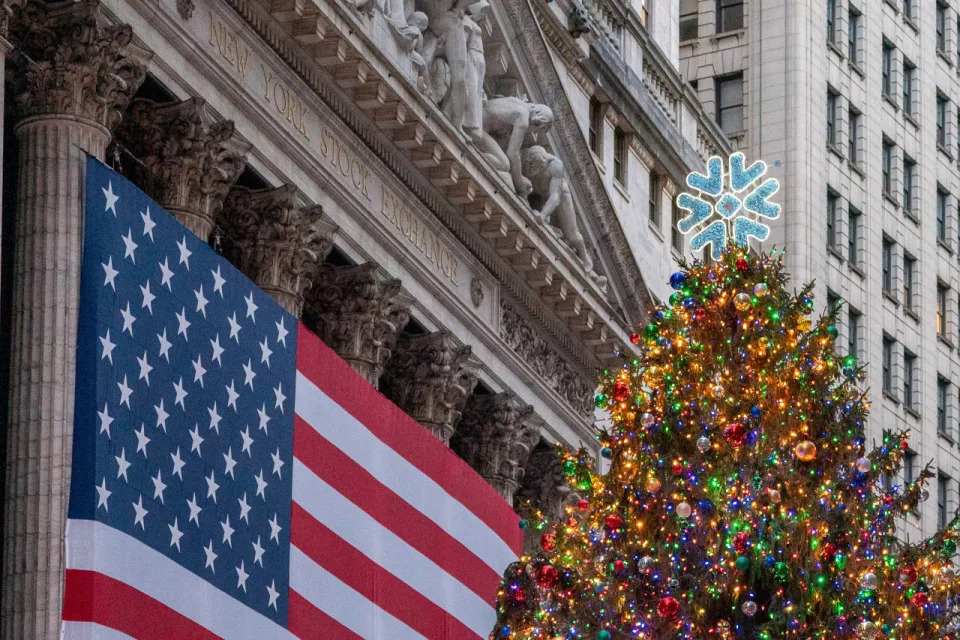Why stock-market volatility spike signals Wednesday’s rout could be a buying opportunity

Wednesday’s steep selloff in the U.S. stock market triggered a sudden spike in Wall Street’s “fear gauge,” posing a buying opportunity for investors and may spark a strong year-end stretch for stocks, according to market analysts.
“The sudden spike in the VIX VIX strongly suggests that Wednesday’s selloff is a near-term buying opportunity. Unless some other powerful negative catalyst comes along, which we do not see happening, we believe U.S. stocks will be higher a month from now than where they closed Wednesday,” Nicholas Colas, co-founder at DataTrek Research said in a Thursday client note.
The Cboe Volatility index, also known as VIX or Wall Street’s “fear gauge,” on Wednesday surged over 74% to end at 27.62, according to FactSet data.
Typically, a value greater than 20 in the VIX indicates a higher level of volatility in the stock market. The gauge on Wednesday posted its largest one-day advance since 2018 after the Federal Reserve decided to lower its benchmark interest rate by 25 basis points but spooked the financial markets by signaling that only a few more rate cuts could be in the cards for this easing cycle.
U.S. stocks tumbled on Wednesday with the blue-chip Dow Jones Industrial Average DJIA down over 1,100 points to log its worst day in over four months. Treasury yields also spiked, with the benchmark 10-year rate BX:TMUBMUSD10Y rising to around 4.5%, according to FactSet data.
See: Why stocks and bonds slumped — and market volatility soared — after Fed meeting
However, Colas said the VIX hit a “buy” signal for stocks after spiking to its 14th highest close since the start of the current bull market in October 2022.
“The VIX has closed above 27 on only 16 occasions out of 565 trading days, or just 2.8% of the time. 12 of those were in October 2022 itself, and a month later the S&P 500 SPX was up 4.6%. Three occurred in early August, when the Japanese yen USDJPY rapidly appreciated and created a few days of havoc in global markets. A month later the S&P was up 5.2%,” Colas wrote.
“Past instances over the last two years have always been good spots to buy stocks,” he added.
See: What the history of Fed pauses says about stocks and bonds after the market freakout
Tom Lee, head of research at Fundstrat Global Advisors, also sees U.S. stocks surging after the spike in volatility on Wednesday. Equities have the potential to kick off a year-end rally, he said.
The “panicked reaction” in the stock market will be short-lived as the S&P 500 was “basically testing its 50-day moving average of 5,923, where it rallied in 2024.” Meanwhile, despite the hawkish rate outlook from the Fed, investors “ultimately” concluded that the central bank was “still dovish, but has less visibility into 2025,” Lee said in a Thursday client note.
“In other words, the Fed remains supportive of markets. The Fed still sees Fed Funds in the long term getting to 3% , which is essentially the same as the 2.9% it showed in September 2024. Thus, there are still 150bps of cuts in the future,” he said.
That’s why Wednesday’s sudden spike in the VIX suggests a near term buying opportunity for investors, Lee said. “This is a ‘buy the dip’ moment, maybe more like ‘back up the truck,’” he added.
The VIX retreated on Thursday afternoon, down over 16%, but it still remained well above its long-term average of 20.
Stocks finished mixed on Thursday, with the Dow eking out a small gain and snapping its 10-session losing streak. The S&P 500 was off less than 0.1%, and the Nasdaq Composite COMP fell 0.1%, according to FactSet data.

